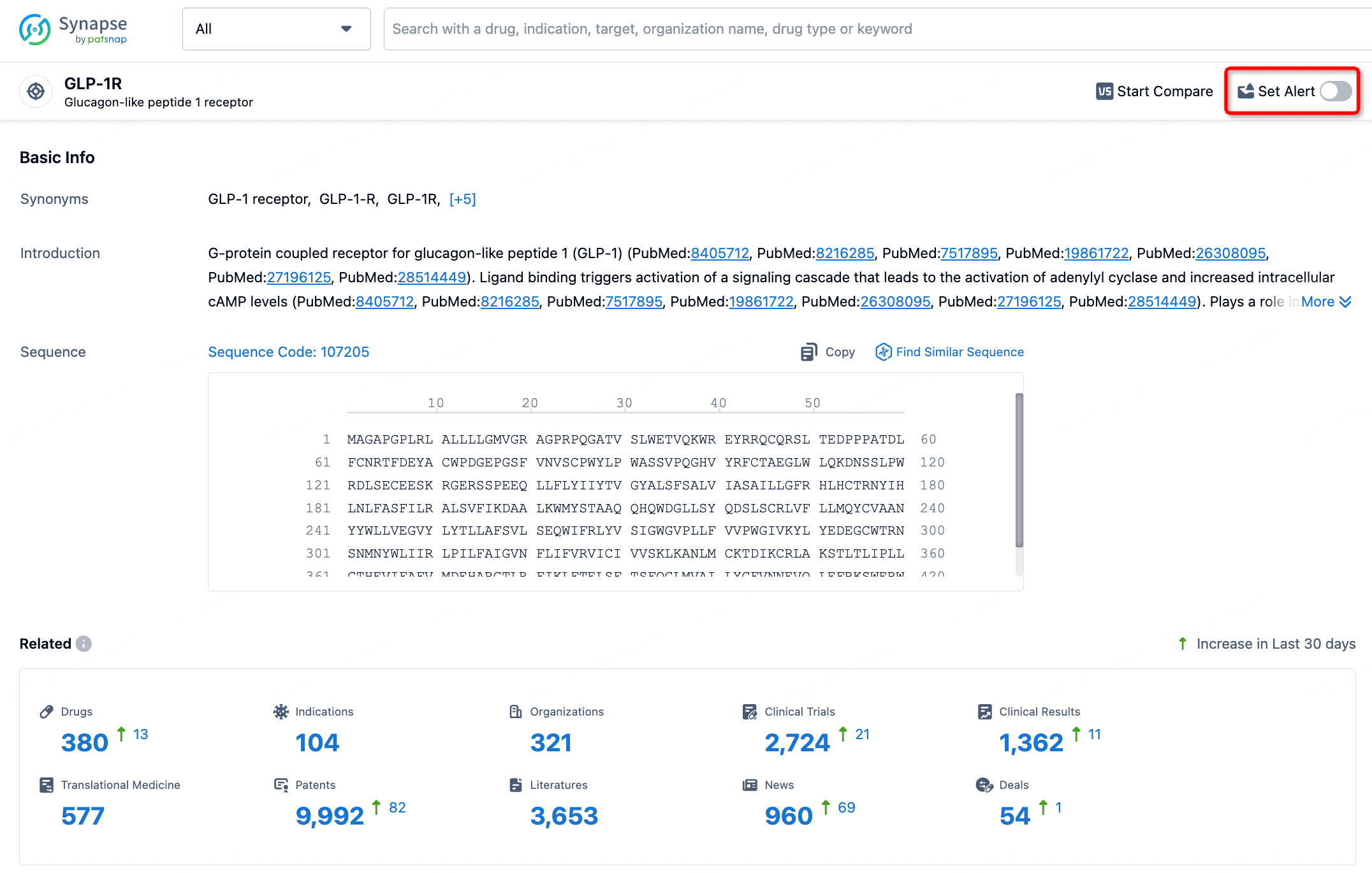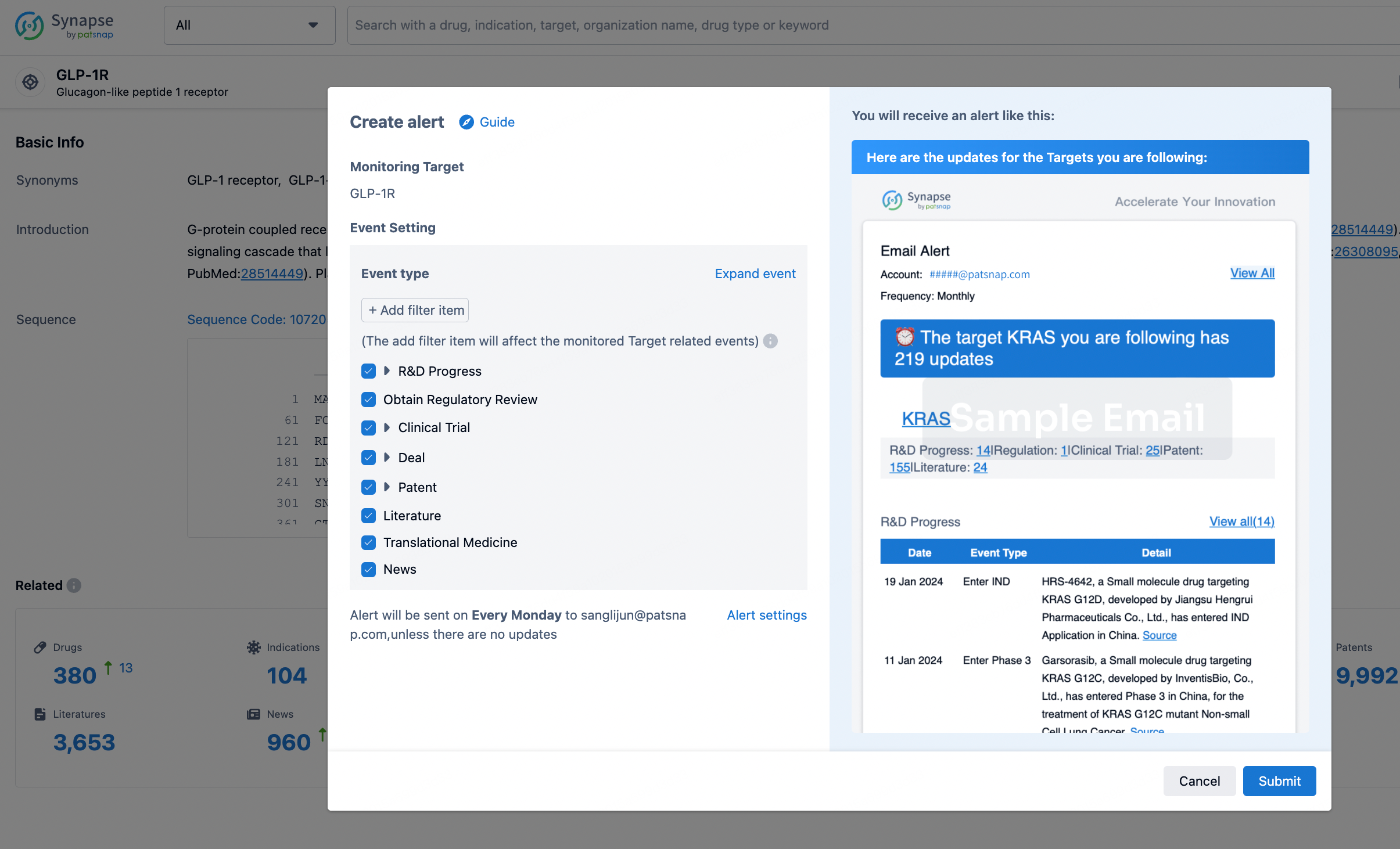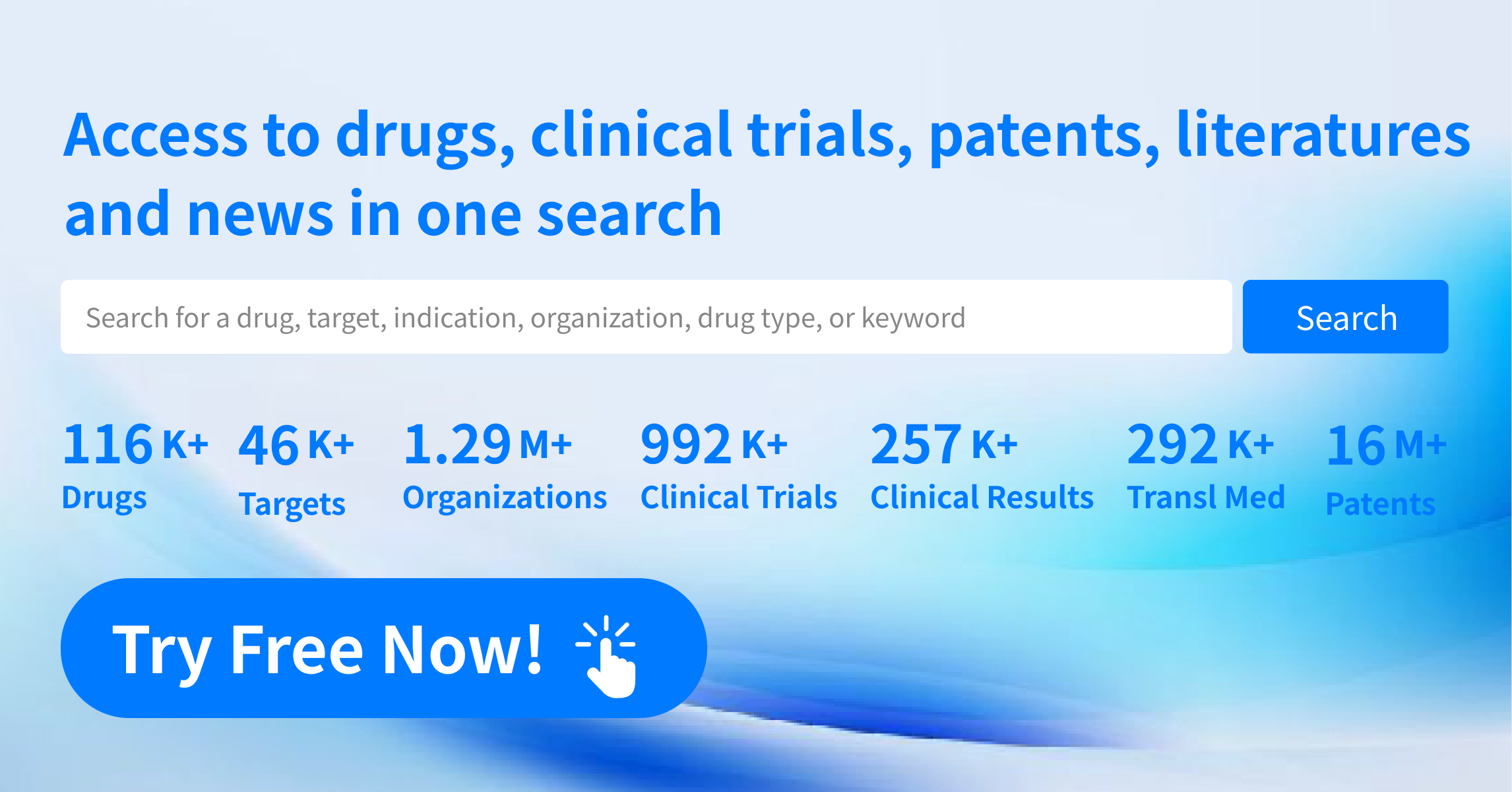Request Demo
What are Nicotinic acetylcholine receptor alpha4/beta2/alpha5 antagonists and how do they work?
26 June 2024
The nicotinic acetylcholine receptor (nAChR) is a critical player in the modulation of neurotransmission in the central and peripheral nervous systems. Among the various subtypes, the alpha4/beta2/alpha5 configuration stands out due to its widespread distribution and functional significance. Antagonists targeting this specific receptor subtype have garnered significant attention owing to their potential therapeutic applications. This article delves into the intricacies of alpha4/beta2/alpha5 nAChR antagonists, exploring their mechanisms of action and potential uses in medicine.
Nicotinic acetylcholine receptors are ionotropic receptors that mediate synaptic transmission through the binding of the neurotransmitter acetylcholine. The alpha4/beta2/alpha5 subtype is one of the most common configurations found in the brain, particularly in regions associated with cognitive processes, reward, and addiction. These receptors are pentameric structures composed of different subunits, and the inclusion of the alpha5 subunit is known to modulate the receptor's pharmacological and biophysical properties. Antagonists targeting these receptors function by inhibiting their activity, thus preventing acetylcholine from exerting its effects.
Nicotinic acetylcholine receptor alpha4/beta2/alpha5 antagonists operate through competitive or non-competitive inhibition. Competitive antagonists bind to the same site as acetylcholine, effectively blocking the neurotransmitter from activating the receptor. Non-competitive antagonists, on the other hand, bind to allosteric sites on the receptor that are distinct from the acetylcholine-binding site. This binding induces conformational changes that inhibit receptor function, thereby reducing the receptor's responsiveness to acetylcholine. Both types of antagonism ultimately result in decreased neuronal excitability and modulation of neurotransmitter release.
These antagonists can have diverse effects depending on their binding affinity, the receptor subunit composition, and the neuronal circuits involved. The specificity of these antagonists for the alpha4/beta2/alpha5 configuration allows for targeted modulation of neural pathways associated with particular physiological and pathological states. This precision is crucial for minimizing off-target effects and enhancing therapeutic efficacy.
Nicotinic acetylcholine receptor alpha4/beta2/alpha5 antagonists have shown promise in several therapeutic areas. One of the most researched applications is in the treatment of nicotine addiction. The alpha4/beta2/alpha5 receptors are heavily implicated in the reward pathways modulated by nicotine. By antagonizing these receptors, these compounds can reduce the rewarding effects of nicotine, thereby aiding in smoking cessation efforts. Clinical trials have demonstrated the potential of these antagonists in reducing nicotine dependence and alleviating withdrawal symptoms.
In addition to addiction treatment, these antagonists have been investigated for their role in managing neuropsychiatric disorders. Conditions such as schizophrenia, depression, and anxiety have been linked to dysregulated cholinergic signaling. By modulating the activity of alpha4/beta2/alpha5 receptors, these antagonists can help restore balance in neurotransmitter systems, potentially improving symptoms and overall quality of life for affected individuals.
Furthermore, there is growing interest in the use of alpha4/beta2/alpha5 nAChR antagonists in neurodegenerative diseases. Alzheimer's disease, for instance, is characterized by a decline in cognitive function and cholinergic deficits. Antagonists targeting this receptor subtype could help rebalance cholinergic signaling, potentially slowing disease progression and ameliorating cognitive decline.
Another promising area of research is pain management. Chronic pain conditions often involve complex neural circuitry and dysregulation of neurotransmitter systems. By inhibiting alpha4/beta2/alpha5 receptors, these antagonists could provide a novel approach to pain relief, particularly in cases where traditional analgesics are ineffective or carry significant side effects.
In conclusion, nicotinic acetylcholine receptor alpha4/beta2/alpha5 antagonists represent a fascinating and potentially transformative class of compounds in neuropharmacology. Through their targeted action on specific receptor subtypes, these antagonists offer promising therapeutic avenues for addiction, neuropsychiatric disorders, neurodegenerative diseases, and pain management. Continued research and clinical trials will be crucial in fully elucidating their therapeutic potential and bringing these novel treatments to fruition.
Nicotinic acetylcholine receptors are ionotropic receptors that mediate synaptic transmission through the binding of the neurotransmitter acetylcholine. The alpha4/beta2/alpha5 subtype is one of the most common configurations found in the brain, particularly in regions associated with cognitive processes, reward, and addiction. These receptors are pentameric structures composed of different subunits, and the inclusion of the alpha5 subunit is known to modulate the receptor's pharmacological and biophysical properties. Antagonists targeting these receptors function by inhibiting their activity, thus preventing acetylcholine from exerting its effects.
Nicotinic acetylcholine receptor alpha4/beta2/alpha5 antagonists operate through competitive or non-competitive inhibition. Competitive antagonists bind to the same site as acetylcholine, effectively blocking the neurotransmitter from activating the receptor. Non-competitive antagonists, on the other hand, bind to allosteric sites on the receptor that are distinct from the acetylcholine-binding site. This binding induces conformational changes that inhibit receptor function, thereby reducing the receptor's responsiveness to acetylcholine. Both types of antagonism ultimately result in decreased neuronal excitability and modulation of neurotransmitter release.
These antagonists can have diverse effects depending on their binding affinity, the receptor subunit composition, and the neuronal circuits involved. The specificity of these antagonists for the alpha4/beta2/alpha5 configuration allows for targeted modulation of neural pathways associated with particular physiological and pathological states. This precision is crucial for minimizing off-target effects and enhancing therapeutic efficacy.
Nicotinic acetylcholine receptor alpha4/beta2/alpha5 antagonists have shown promise in several therapeutic areas. One of the most researched applications is in the treatment of nicotine addiction. The alpha4/beta2/alpha5 receptors are heavily implicated in the reward pathways modulated by nicotine. By antagonizing these receptors, these compounds can reduce the rewarding effects of nicotine, thereby aiding in smoking cessation efforts. Clinical trials have demonstrated the potential of these antagonists in reducing nicotine dependence and alleviating withdrawal symptoms.
In addition to addiction treatment, these antagonists have been investigated for their role in managing neuropsychiatric disorders. Conditions such as schizophrenia, depression, and anxiety have been linked to dysregulated cholinergic signaling. By modulating the activity of alpha4/beta2/alpha5 receptors, these antagonists can help restore balance in neurotransmitter systems, potentially improving symptoms and overall quality of life for affected individuals.
Furthermore, there is growing interest in the use of alpha4/beta2/alpha5 nAChR antagonists in neurodegenerative diseases. Alzheimer's disease, for instance, is characterized by a decline in cognitive function and cholinergic deficits. Antagonists targeting this receptor subtype could help rebalance cholinergic signaling, potentially slowing disease progression and ameliorating cognitive decline.
Another promising area of research is pain management. Chronic pain conditions often involve complex neural circuitry and dysregulation of neurotransmitter systems. By inhibiting alpha4/beta2/alpha5 receptors, these antagonists could provide a novel approach to pain relief, particularly in cases where traditional analgesics are ineffective or carry significant side effects.
In conclusion, nicotinic acetylcholine receptor alpha4/beta2/alpha5 antagonists represent a fascinating and potentially transformative class of compounds in neuropharmacology. Through their targeted action on specific receptor subtypes, these antagonists offer promising therapeutic avenues for addiction, neuropsychiatric disorders, neurodegenerative diseases, and pain management. Continued research and clinical trials will be crucial in fully elucidating their therapeutic potential and bringing these novel treatments to fruition.
How to obtain the latest development progress of all targets?
In the Synapse database, you can stay updated on the latest research and development advances of all targets. This service is accessible anytime and anywhere, with updates available daily or weekly. Use the "Set Alert" function to stay informed. Click on the image below to embark on a brand new journey of drug discovery!
AI Agents Built for Biopharma Breakthroughs
Accelerate discovery. Empower decisions. Transform outcomes.
Get started for free today!
Accelerate Strategic R&D decision making with Synapse, PatSnap’s AI-powered Connected Innovation Intelligence Platform Built for Life Sciences Professionals.
Start your data trial now!
Synapse data is also accessible to external entities via APIs or data packages. Empower better decisions with the latest in pharmaceutical intelligence.


